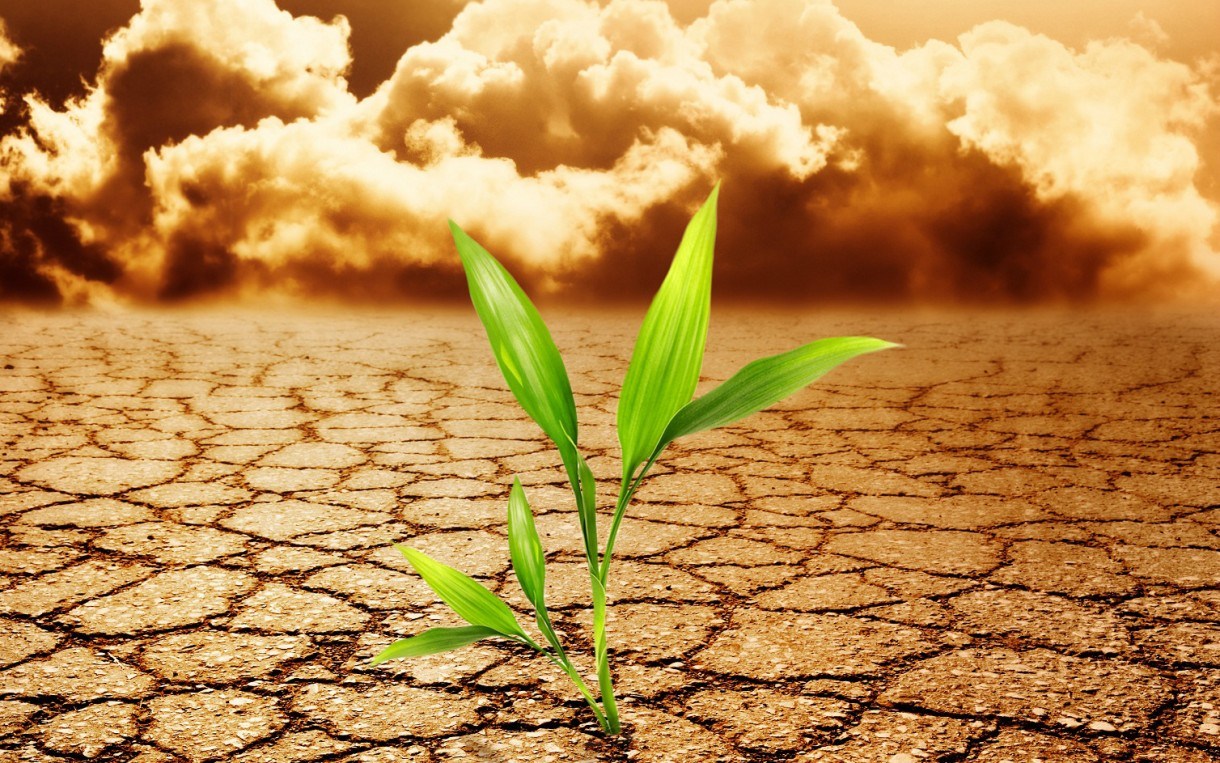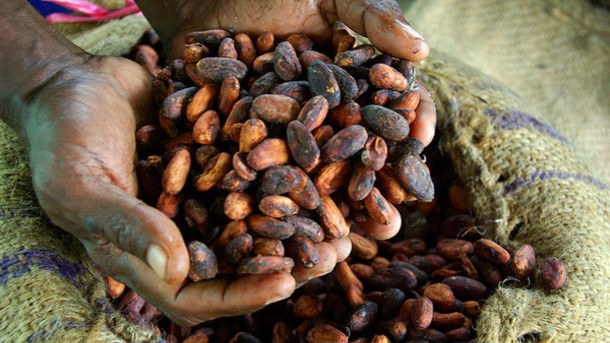Chocolate Lovers, Beware. How Mars, Inc. is Fighting the Threat of a Major Meltdown

Due to unfavorable climate change trends, one of the world’s most cherished sweet-tooth-satisfiers may become a luxury item as soon as 2030.
The chocolate industry has a rocky road ahead of it. According to recent studies, global cocoa production is at risk, as prime cocoa-growing regions are under the imminent threat of climate change. While simply a guilty pleasure for some, chocolate is a serious business for many around the world. News of future climatic problems only amplify existing, unfavorable supply/demand dynamics that are placing upward pricing pressure on the $98.3 billion global chocolate market [1]. Mars, Incorporated (“Mars”), the number one chocolate producer in the world, is trying to get ahead of the problem, but is the company doing enough? Is the end of the cheap, quick-fix-chocolate era upon us?
The Heat is On: Climate Change & Cocoa Production
While cocoa is produced all over the world, over 70% of all of the world’s cocoa is grown in the West African Cocoa Belt (the “Belt”), a region reaching from Sierra Leone to southern Cameroon [2]. In particular, in the West African countries of Cote d’Ivoire and Ghana cocoa is king. With a total production of 1,448,992 tonnes in 2015, Cote d’Ivoire is the number one producer in the world, supplying 30% of the world’s total cocoa [1]. Ghana ranks number two, having produced 835,466 tonnes in 2015 [1].
The Belt’s naturally hot, rainy, and humid climate serves as an ideal habitat for cocoa trees. In addition to light, ample shade, and high temperatures, high humidity and rainfall patterns are perhaps the most critical climatic factors in encouraging optimal growth [3].
Unfortunately, erratic rainfall patterns and rising temperatures in the Belt are challenging future growth prospects. Over the last two years, inadequate rainfall during heat waves have caused draughts and heavy, unexpected rain has destroyed flowering trees.

Looking ahead, climate change is expected to drive increased instances of rain irregularity. Additionally, global temperatures are expected to increase by 2.0 degrees Celsius by 2050 [4]. While the higher temperatures alone are not a problem for West African cocoa trees, the accompanying increase in evapotranspiration is. As higher temperatures drive increases in evaporation and seasonal draught, soil moisture and fertility will decrease.
Given these weather patterns, the International Center for Tropical Agriculture (“ICTA”) predicts a substantial decline in West African production by 2030 and by 2050, prime cocoa-plantations will be unusable [5].

The timing of these climatic issues is less than ideal, as farmers are facing unprecedented global demand. Since 2012, cocoa prices have increased approximately 40% but due, in part, to hazard rainfall patterns, West African production is down, especially in Ghana [6]. World cocoa demand is forecast to outpace supply by 1 million tonnes by 2020 – that’s about 90,909,090,909 Lindt balls [7].
Climate-smart Chocolate
A world without chocolate can probably best be described as unlivable. As such, many experts have already begun attempting to mitigate the impact of climate change by exploring sustainability measures. These measures include improvements in shade management, soil fertility, land preparation, and water filtration.
Unfortunately, approximately 97% of West African farmers have not taken advantage of any of these adaptive strategies [3]. This is because, counter to most industrialized crops, 85% of cocoa comes from small family-run farms who lack the resources and training needed to adapt [8]. As a result, as their farms dry up, they face unemployment, diminished income, decreased standard of living, and reduced life expectancy [9].
Mars Fights Back
With net sales of $18.4 billion as of 2015, Mars is the number one chocolate manufacturer in the world [10]. The 100-year old company features 29 chocolate brands, including five billion-dollar household favorites: M&M’s, Snickers, Dove/Galaxy, Mars/Milky Way, and Twix [11].

The climatic threat could have a huge impact on Mars’ core business, upsetting its global pricing and supply costs. According to Barry Parkin, the company’s chief sustainability officer, “Climate change is absolutely a threat. And that’s why we’re doing all that we’re doing today.” [12]
What exactly are they doing?
For starters, they are attempting to increase farmer productivity by creating educational programs that can help smallholder West African farms improve farming practices and boost supply [13]. The company is also teaming with the World Cocoa Foundation and local governments to establish development centers and programs to train farmers [14]. By 2020, Mars hopes to reach 150,000 farmers, tripling yields [13]. Mars is also ensuring it stays informed. In September, the company hired a team of meteorologists to conduct analyses of changing weather patterns to help make informed decisions around the supply chain and sourcing of ingredients [15].
So, perhaps there is hope for your sweet tooth. Mars should continue to educate local farmers, and hopefully inspire other market leaders to follow suit.
Word Count: 791
References
[1] World Atlas, “Top 10 Cocoa Producing Countries,” http://www.worldatlas.com/articles/top-10-cocoa-producing-countries.html, accessed November 2016
[2] Schroth, Götz, Peter Läderach, Armando Isaac Martinez-Valle, Christian Bunn, and Laurence Jassogne. “Vulnerability to Climate Change of Cocoa in West Africa: Patterns, Opportunities and Limits to Adaptation.” Science of The Total Environment 556 (2016): 231-41.
[3] Codjoe, F, Ocansey, C., Boateng, D., and Ofori, J., “Climate Change Awareness and Coping Strategies of Cocoa Farmers in Rural Ghana.” Journal of Biology, Agriculture and Healthcare 3.11 (2013)
[4] Intergovernmental Panel on Climate Change, “Near-term Climate Change: Projections and Predictability.” Climate Change 2013 – The Physical Science Basis (n.d.): 953-1028.
[5] LÃderach, P., A. Martinez-Valle, G. Schroth, and N. Castro. “Predicting the Future Climatic Suitability for Cocoa Farming of the World’s Leading Producer Countries, Ghana and Cote d’Ivoire.” Climatic Change 119.3-4 (2013): 841-54.
[6] Wexler, Alexandra. “Chocolate Makers Fight a Melting Supply of Cocoa.” WSJ. Wsj.com, 13 Jan. 2016. Accessed Nov. 2016.
[7] Mathiesen, Karl. “No More Beer, Chocolate or Coffee: How Climate Change Could Ruin Your Weekend.” The Guardian. Guardian News and Media, 09 June 2015. Accessed Nov. 2016.
[8] World Cocoa Foundation, “Cocoa Market Update”, www.worldcocoa.org. Accessed Nov. 2016.
[9] Ghana Business News, “The Sad Story of Ghana’s Cocoa Industry and the Way Forward.” Ghana Business News. N.p., 13 Apr. 2016. Accessed Nov. 2016.
[10] International Cocoa Organization, “The Chocolate Industry.” http://www.icco.org/about-cocoa/chocolate-industry.html. 28 Jan 2016. Accessed Nov. 2016.
[11] Mars, Inc. “Our Brands” http://www.mars.com/global/brands/chocolate. Accessed Nov. 2016.
[12] “As Big Food Feels Threat Of Climate Change, Companies Speak Up.” NPR. Accessed 04 Nov. 2016.
[13] Shared Value Initiative, “Mars Creates West African Cocoa Clusters and Increases Production” https://sharedvalue.org. Accessed Nov 2016.
[14] Sustainable Brands, “Hershey, Lindt, Mars, Nestlé Join New Program to Help Cocoa Farmers Adapt to Climate Change” www.sustainablebrands.com. Jun 2016. Accessed Nov 2016.
[15] Taylor, Kate. “The Smart Reason the World’s Largest Candy Maker is Hiring Meteorologists.” Businessinsider.com. Sept. 2016. Accessed Nov 2016.




As a fellow chocolate appreciator, I was fascinated by Kamoy’s post about the climactic threats to the chocolate industry. I am impressed with Mars’ efforts to increase farmer productivity by helping small-scale West African farmers improve farming practices and yield.
However, I’d like to pose a question to the class. Animal health (i.e., livestock production) is another category where small-scale producers are implementing new productivity measures to increase yields (particularly in emerging markets, where most livestock production still occurs on a relatively small scale). While these efforts are admirable from a food supply standpoint, they also involve certain health risks. In the case of livestock, the introduction of more “efficient” production practices involve keeping animals in closer quarters, increasing the risk of disease that will be later introduced into the food supply. Do you think that more “efficient” farming practices, when introduced to the food supply, come with eventual health risks? If so, how can industry work to mitigate those risks?
Finally, I am also curious about Mars’ diversification efforts. Clearly, the company is preparing for future natural resource constraints. However, has the overall business made an effort to reduce its exposure to cocoa altogether? Is it looking into sourcing substitute ingredients, or shifting its focus to alternative products altogether?
As Elizabeth, diversification was the first question that came to mind. Mars notes extensive support for West African small-hold farmers as well as support for Indonesian farmers, while the only investment noted in Central and South America was their development of the Mars Center for Cocoa Science in Bahia, Brazil. The center was developed in 1982…
Central and South American boast some of the world’s most critical cocoa producing regions, but do not seem to truly be on Mars’ radar in regards to recent investments in production improvement. I may make the argument that either Mars should begin investing more in these regions, or if the need is smaller compared to that in West Africa, shift their supply mix toward Central and South American producers. Or are there more specific reasons that Mars focuses outside of the Americas? Perhaps due to cheaper availability of product in a region that still faces low levels of Fair Trade certified cocoa…
http://www.marsgcc.com/global/about-us/policies-and-practices/cocoa-policy
http://www.worldatlas.com/articles/top-10-cocoa-producing-countries.html
https://www.greenbiz.com/blog/2014/03/20/hersheys-mars-sweeten-market-cocoa-farmers
Kamoy, great article and research. I wonder to what extent the cocoa bean can be artificially created in such a way that both the flavor and textures are replicated. Given the recent successes in lab grown red meat substitutes, I’ve got to believe chocolate is also within the realm of the possible.
Future of Meat: http://gizmodo.com/the-future-will-be-full-of-lab-grown-meat-1720874704
Kamoy – great post. And I agree that a world without chocolate would be unbearable.
You noted that most cocoa comes from small, family-run farms and that this presents challenges to education and greater productivity. Have there ever been efforts to consolidate or industrialize cocoa farming? If not, I’d be curious to know why. My guess would be that governments in these countries try to protect these small farmers for political and cultural reasons, perhaps in an effort to maintain traditional economic structures and limit the effects of globalization. Still, it seems like Mars could benefit from some vertical integration in the supply chain and deploying their substantial capital resources toward stabilizing and/or increasing the availability of the crop around the world.
From an accounting perspective, I also wonder how Mars accounts for their outreach initiatives to teach and equip these small farmers. Do they receive preferential treatment or discounts on cocoa crops? Does Mars simply write-off these efforts as a cost of doing business? Or are they viewing it as an investment in future yields? My intuition is that it’s the latter, but I’d be curious to know your thoughts on these questions. As with many climate change initiatives, I sense a tension between altruism and financial self-interest.